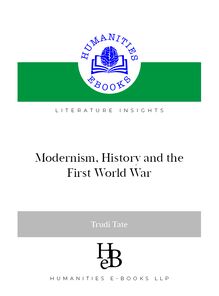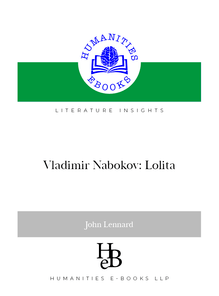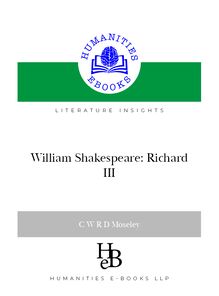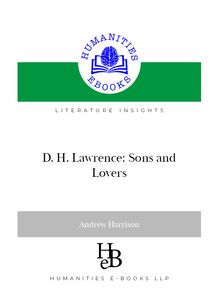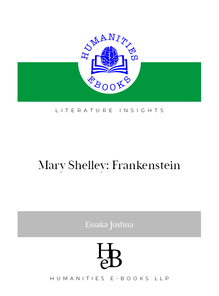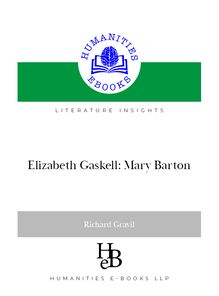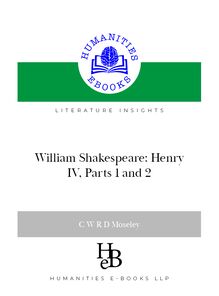-
 Univers
Univers
-
 Ebooks
Ebooks
-
 Livres audio
Livres audio
-
 Presse
Presse
-
 Podcasts
Podcasts
-
 BD
BD
-
 Documents
Documents
-
- Cours
- Révisions
- Ressources pédagogiques
- Sciences de l’éducation
- Manuels scolaires
- Langues
- Travaux de classe
- Annales de BEP
- Etudes supérieures
- Maternelle et primaire
- Fiches de lecture
- Orientation scolaire
- Méthodologie
- Corrigés de devoir
- Annales d’examens et concours
- Annales du bac
- Annales du brevet
- Rapports de stage
La lecture à portée de main
101 pages
English
Découvre YouScribe en t'inscrivant gratuitement
Je m'inscrisDécouvre YouScribe en t'inscrivant gratuitement
Je m'inscris
Obtenez un accès à la bibliothèque pour le consulter en ligne
En savoir plus
En savoir plus
101 pages
English
Obtenez un accès à la bibliothèque pour le consulter en ligne
En savoir plus
En savoir plus

Description
A historically informed and informing study guide to Scott's four great novels of British India -The Jewel in the Crown, The Day of the Scorpion, The Towers of Silence, A Division of the Spoils - and of the popular coda, Staying On.
Sujets
Informations
| Publié par | Humanities eBooks |
| Date de parution | 11 janvier 2021 |
| Nombre de lectures | 0 |
| EAN13 | 9781847600561 |
| Langue | English |
| Poids de l'ouvrage | 1 Mo |
Informations légales : prix de location à la page 0,0000€. Cette information est donnée uniquement à titre indicatif conformément à la législation en vigueur.
Extrait
Literature Insights General Editor: Charles Moseley
Running Head 1
Paul Scott: The Raj QuartetandStaying On
John Lennard
“a magnificent portrait … of the heart of the British Empire as it ceased beating” http//www.humanities-ebooks.co.uk ForadviceonuseoFthisebookpleasescrolltopage2
publicationdata
© JOhN leNNàRD, 2008
The Author has asserted his right to be identiîed as the author of this Work IN àCCORDàNCe wITh The cOPyRIGhT, deSIGNS àND pàTeNTS aCT 1988.
Published by Humanities-Ebooks LLPtIRRIL HàLL, tIRRIL, peNRITh ca10 2JE
rEadingoptions
*To use the navigation tools, the search facility, and other features of the toolbar, this Ebook should be read in default view. *To navigate through the contents use the hyperlinked ‘Bookmarks’ at the left of the screen. *To search, expand the search column at the right of the screen or click ON The BINOCULàR SyMBOL IN The TOOLBàR. *For ease of reading, use <CTRL+L> to enlarge the page to full screen *Use <Esc> to return to the full menu. *Hyperlinks appear in Blue Underlined Text. To return from an internal hyperlink use the ‘previous view’ button (more than once if need be). *For a computer generated reading use <View>Read out loud> licEncEandpErmissions
Purchasing this book licenses you to read this work on-screen and to print one copy for your own use. Copy and paste functions are disabled. No part of this publication may be otherwise reproduced or transmitted or distributed without the prior written permission of both the copyright owner and the pub-lisher. Making or distributing copies of this book constitutes copyright infringe-ment and would be liable to prosecution. Thank you for respecting the rights of the author.
isbn 978-1-84760-056-1
Paul Scott:The Raj Quartet&Staying On
John Lennard
Tirril: Humanities-Ebooks, 2008
Contents
A Note on the Author
A Note on References
Preface
Part 1. Life and Works: An Overview 1.1 Paul Mark Scott, 1920–78 1.2 Work to 1964 1.3 TheRaj QuartetandStaying On, 1964–77 Part 2. Facts, Fictions, and Verisimilitude: Representing the BritishRaj 2.1 Geography 2.2 History 2.3 Biography Part 3. ‘Coming to the end of themselves as they were’: Witnessing Imperial Decay 3.1 The Civil 3.2 The Military Part 4. ‘There’s nothing I can do’: Embodying Personal Nullity 4.1 Edwina Crane 4.2 Daphne Manners 4.3 Barbie Batchelor 4.4 Sarah Layton Part 5. ‘I’ve put it badly’: Class and Silence 5.1 Neo-Puritanism and the ‘Split Century’, 1850–1950 5.2 Ronald Merrick as Antagonist 5.3 Ronald Merrick as Protagonist
the ràj QUàRTeT 5
Part 6. Dreams, Nightmares, &Realpolitik: Representing India (and Pakistan) 6.1 Mohammed Ali Kasim, Gandhi-ji, and the Congress 6.2 Sayed Kasim, Jinnah, and the Muslim League 6.3 Ahmed Kasim, Pandit Baba, and theRashtriya Swayamsevak Sangh 6.4 Hari Kumar as Good and Unknown Indian 6.5 Tusker and Lucy Smalley:Staying On Appendix 1: Granada TV’s adaptations of Scott
Appendix 2: Critics’ Corner and Further Reading
Bibliography Works by Paul Scott Works on Paul Scott Works on Anglo-/India
A Note on the Author
Born and raised in Bristol, UK, John Lennard took a B.A. and D.Phil. at New College, Oxford, and an M.A. at Washington University in St Louis. He has taught for the Universities of London, Cambridge, and Notre Dame du Lac, for the Open University, and for Fairleigh Dickinson University on-line; he is now Professor of British and American Literature at the University of the West Indies—Mona. His publications includeBut I Digress: The Exploitation of Parentheses in English Printed Verse(Clarendon Press, 1991),The Poetry Handbook(OUP, 1996; 2/e 2005), with Mary LuckhurstThe Drama Handbook(OUP, 2002), andOf Modern Dragons and other essays on Genre Fiction(HEB, 2007). He is General Editor of HEB’s Genre Fiction Sightlines and Monographs series, for which he has written on Reginald Hill, Walter Mosley, Octavia E. Butler, Ian McDonald, and Tamora Pierce. For Literature Insights he has also written on Shakespeare’sHamletand Nabokov’sLolita.
A Note on References
To help keep footnotes to a minimum references to the texts ofThe Raj Quartetand Staying Onor ‘D87’.are given parenthetically, by letter and page-number; as ‘J220’ The letters indicate the novels as follows:
J—The Jewel in the Crown S—The Day of the Scorpion T—The Towers of Silence D—A Division of the Spoils SO—Staying On
Full publication and other details are given in the bibliography.
Preface
For the serious reader, including students required to write about it, getting through theRaj Quartetis not enough. The sheer scale of Scott’s work/s bafes easy once understanding of matters at large, and critics face a problem in assuming familiarity or explaining at length. I have chosen to believe that my readers will have at least some familiarity with the plot/s, and will remember more as they read: Parts 1 and 2 cover basic contexts and offer some plot-summary and îrst-order analysis; Parts 3 and 4 turn to thematics, and roam more at large; Part 5 attempts a panoptic view through the common misprision of Ronald Merrick; and Part 6 considers some Indian realities and perspectives. References and explanations are, I hope, provided asnec-essary, but chapters build on one another, and especially in Parts 5 and 6 what goes before is largely taken as read. For some the necessary detail may in itself be daunting, but Scott is a novelist who richly rewards careful reading. He offers a magniîcent portrait of attested accuracy of the heart of the British Empire as it ceased beating; his is also in British litera-ture the outstanding tragedy to encompass World War 2—a conjunction to command attention. To lose oneself for a while in theQuartet’sdramatic action and supple, highly variegated prose is to be steeped in both sorrow and potent argument; and if between readings one accumulates greater historical, social, or linguistic knowledge of (Anglo-)India, each return sparks with yet more things Scott noticed, knew, and included in his weave. I have read him attentively for more than 20 years and still înd new things whenever I revisit, so completion is not to be aimed at—and that is partly the point, for such comprehension must diminish its object. Neither India nor empire can be wholly accounted, and Scott reects at every level the uncertainty of the human mind and will, our failures of perception and adjustments of memory—but he also built over a lifetime a case of deep perception and multiple, braced memories, with vivid actions and scenes at once presenting history and set in relief against his-torical events. The Granada TV adaptation of theQuartetunder the umbrella-title ofThe Jewel in the Crown(discussed in appendix 1) is a marvellous work and an invaluable guide to (Anglo-)India in the 1940s. Period minds as well as period detail are superbly re-
the ràj QUàRTeT 9
presented, and the older social mores that younger readers often have real difîculty in understanding are made coherent in every moment of dialogue. But the adaptation necessarily straightens out Scott’s chronological loops and overlaps, and besides dis-pensing with assorted minor characters, most of the novels’ dialogue, and at least half of the important metaphors as well as all the prose styles, it thereby dispenses with the structureScott imposed—the internal ordering of the constituent novels, whicharenovels, each in its own right, not merely episodes. And yet it is in that structure that a good part of the story lies—in every sense—so the TV series, while superb, cannot substitute for the experience of reading what Scott wrote, in the order he designed. The true key, as one’s knowledge expands or becomes uncertain, as memories are jogged or prove evasive, is to keep contingency in mind. All the novels of the Quartetare about people possessed of or coming to premature judgements, assuming a certitude of factual and usually moral understanding that a later chapter reveals as at best questionable, at worst plainly erroneous or the short-circuit of a bigotry. Even at the end much remains uncertain, morally as factually, for the death of an empire and the birth of several nations are inevitably so, confused, bloody and productive. There is also the sobering thought that though he wroteofthe 1940s, Scott wroteforthe 1960s and ’70s, and beyond, reporting with great dedication and intensity a case-study he thought critical to understanding himself and his own present, as the 1940s had shaped it. He said in 1968 that ‘If I write about Anglo-India in 1942 I do so not only because I înd that period lively and dramatic but because it helps me to express 1 the fullness of what I’m thinking and feeling about the world I live in’. And that pro-vides an excellent prescription for reading him, for the more fully a reader is engaged, the more profound the lesson Scott can teach about the world we have inherited.
Paul Scott, ‘India: A Post-Forsterian View’, in Mary Stocks, ed.,Essays by Divers Hands, Being the Transactions of the Royal Society of Literature, new series, vol. xxxvi (London: OUP, 970), pp. 113–32, P. 116. see àLSO P. 58, N. 2.
Part 1. Life and Works: An Overview
Paul Scott’s life and literary work were shaped by his experience of British India. 1 Called-up to the army in 1940, he was posted to the Subcontinent in 1943, and 2 served in northern India and Burma until demobilisation in 1946—three crowded years that saw Allied victory over the Axis powers of Germany and Japan and the ter-rible nuclear dawn at Hiroshima, but also the catastrophic collapse of British imper-ial rule in Asia. The events Scott lived through during that time, and the massacres he knew were beginning to happen as he left, haunted him for the rest of his life, and drove him to train himself simultaneously as a novelist and imperial historian, that he might bear full witness to these experiences. Many others who were there, British and Indian, were also left haunted. Besides the endemic racism and snobbery of much imperial life, and the horrors of the Eastern theatre of World War 2, there were also events in their own ways even more terrible. As many as one million Indians died in the Great Bengal Famine of 1943–4, and most historians now agree that between one and two million Hindus, Sikhs, and Muslims 3 were murdered during 1946–7 in sectarian violence triggered by Partition. Those events laid the foundations for problems that continue even today—the (nuclear) enmity of India and Pakistan, religious extremism in both nations, the ‘Kashmir’ problem, Maoist terrorism in Bengal, and the endemic poverty of Bangladesh—so there were compelling reasons to be haunted, and to believe that the vaunted power and glory of the BritishRajhad ended in vileness and disaster. But if some under-stood that all too well, others, especially those in Britain with little knowledge or
1Subcontinentcovers the modern nations of Pakistan, India, Bangladesh, Myanmar (Burma), and Sri Lanka (Ceylon), all part of the BritishRaj(Hindi, ‘rule’)—the British Indian empire. Now Myanmar. 3Partition(with a capital ‘P’) refers to the 947 division of theRajinto the independent states of India and Pakistan, which initially comprised West Pakistan (now Pakistan) and East Pakistan (now Bangladesh). India became a secular republic with an enormous Hindu majority, Pakistan an Islamic republic with a very large Muslim majority, and 0–5 million people became refu-gees—Hindus eeing areas that would become Pakistan, and Muslims areas that would become India. Terrorists of each religion organised massacres of refugees of the other religion: at the time it was known that more than 400,000 had been murdered, and the accepted death-toll has steadily RISeN.
-
 Univers
Univers
-
 Ebooks
Ebooks
-
 Livres audio
Livres audio
-
 Presse
Presse
-
 Podcasts
Podcasts
-
 BD
BD
-
 Documents
Documents
-
Jeunesse
-
Littérature
-
Ressources professionnelles
-
Santé et bien-être
-
Savoirs
-
Education
-
Loisirs et hobbies
-
Art, musique et cinéma
-
Actualité et débat de société
-
Jeunesse
-
Littérature
-
Ressources professionnelles
-
Santé et bien-être
-
Savoirs
-
Education
-
Loisirs et hobbies
-
Art, musique et cinéma
-
Actualité et débat de société
-
Actualités
-
Lifestyle
-
Presse jeunesse
-
Presse professionnelle
-
Pratique
-
Presse sportive
-
Presse internationale
-
Culture & Médias
-
Action et Aventures
-
Science-fiction et Fantasy
-
Société
-
Jeunesse
-
Littérature
-
Ressources professionnelles
-
Santé et bien-être
-
Savoirs
-
Education
-
Loisirs et hobbies
-
Art, musique et cinéma
-
Actualité et débat de société
- Cours
- Révisions
- Ressources pédagogiques
- Sciences de l’éducation
- Manuels scolaires
- Langues
- Travaux de classe
- Annales de BEP
- Etudes supérieures
- Maternelle et primaire
- Fiches de lecture
- Orientation scolaire
- Méthodologie
- Corrigés de devoir
- Annales d’examens et concours
- Annales du bac
- Annales du brevet
- Rapports de stage
Signaler un problème
YouScribe
Le catalogue
Le service
© 2010-2024 YouScribe
